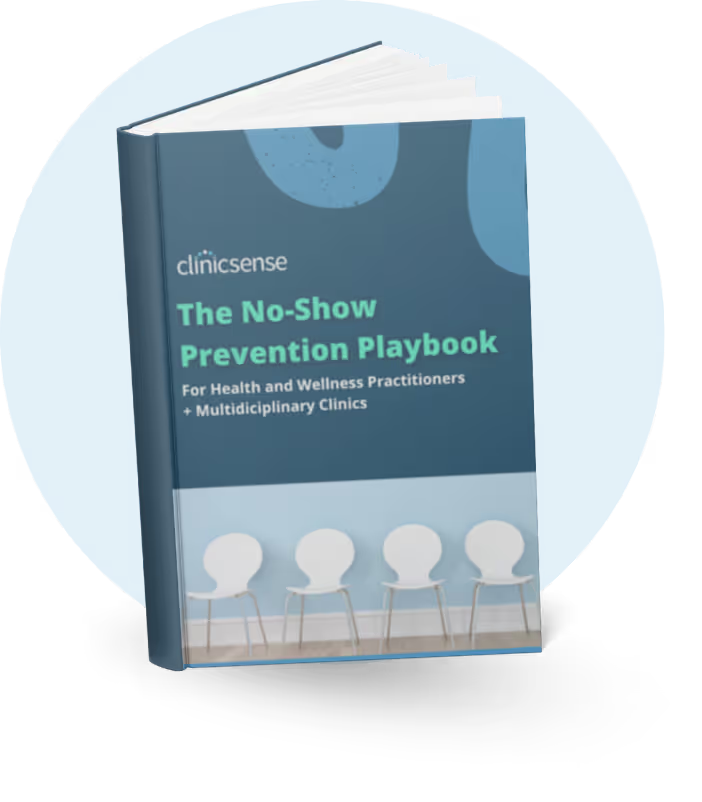Practice Management Tips
January 31, 2024

Accounting is on every massage business owner’s to-do list. It’s not fun, but someone’s gotta do it. You likely became a massage therapist because you enjoy engaging with clients and impacting people's lives. Spreadsheets filled with numbers and dates don’t exactly fit that description.
The good news is bookkeeping for massage therapists isn’t that hard. It doesn’t need to take up too much of your time either.
Let’s take a look at how to get it done right, and get it done fast.
You started a business to help people AND make money. Keeping track of all that money and where it goes is essential.
Bookkeeping for massage therapists is sometimes dreaded, avoided or forgotten. Neglecting this vital duty is a recipe for disaster. If you don’t keep current and accurate records, you’ll be scrambling at tax time to get it all done. You won’t have precise numbers to report on loan applications. You may not know if you can afford that hydraulic table you’ve been eyeing.
Keeping your books up-to-date allows you to answer money questions quickly, accurately, and confidently. The numbers in your reports paint a picture of the financial health of your business. At a glance, you can see how you’re doing and how far you are from reaching your goals.
Bookkeeping helps you:

It’s recommended to seek professional help if you need guidance, especially at tax time. However, for most massage therapists, tracking daily income and expenses is something you can do yourself.
Bookkeeping for massage therapists involves tracking your daily sales and expenses. If you’re an independent massage therapist, it may not be cost-effective to hire a bookkeeper. If you have a larger clinic, you may be able to delegate accounting to one of your staff. In either case, you need a system for keeping track of everything, and you need to monitor the numbers.
You don’t need to be a math whiz to do your accounting. You also don’t need to invest a lot of time into the task either. There’s software that will do all the math for you. If you use clinic management software, like ClinicSense, you can even automate a lot of your accounting.
If you majored in massage therapy, not bookkeeping, you’re like most every other massage therapist. Here are a few things you may not have learned in school.
Keeping accurate records is pretty straightforward. When money comes into your business, record it. When money goes out of your business, record it. Then compile those numbers to create reports.
Bookkeeping essentials:
You now know the basics of accounting. Use the following best practices to streamline bookkeeping for your massage business.

Before you do anything else, set up a separate checking account for your massage business. Use this account exclusively for business income and business expenses. This will make it easy to track money spent on your massage business. You may also opt to get a business credit card to make purchasing supplies easier.
It’s also a good idea to set up a business savings account. This is a good place to set aside funds for estimated taxes, future purchases and money to cover expenses when you go on vacation.
With all the software available to you, there’s no reason bookkeeping should take a lot of a massage therapist's time. You no longer have to create your own spreadsheets, and you definitely don’t need pen and paper to track finances anymore.
Save yourself some time and use ClinicSense to automate scheduling, taking payments, tracking sales and generating reports. With clinic management software like this, all you have to do is click a button and it’s done.
Ditch the calculator and let technology do the math for you. There are a plethora of accounting software options. As a massage therapist, you likely need something pretty basic.
The accounting software you choose should be able to create an accounting journal, general ledger, balance sheet and profit and loss statement. Choose something easy to use. You can even find software that allows you to sync your bank account to assist in expense tracking.
Knowing how much money you’re earning, and the cost of running your business - is the foundation of any budget. The reports you create in your bookkeeping will show what you can and can’t afford.
Use the numbers in your reports to create a budget for your spending. This will help you plan for future purchases and expenses. It will also help you determine how much you can afford to pay yourself.
Ideally, you should be able to look at your reports at any time and know where your business stands financially. If you’re automating many of your accounting tasks, this will be easy.
It’s best to record sales coming in as they happen, so nothing goes unaccounted for. Make this part of your clients’ check-out process to ensure it gets done. Then set aside a time each week or each month (depending on how many transactions you have) to record your expenses.

Once you record your purchases, do not throw that receipt away. It’s not enough to simply report your expenses. If you want to deduct those expenses when filing your taxes, you may need to prove those purchases were legitimate.
These days, it’s easy to pull up payments online for previous purchases like utilities, phone bills and mortgage payments. That will cut down on filing paper, just be sure you have access to all that. Then create a folder (physical or digital) for all the receipts you are issued for miscellaneous business purchases.
Don’t leave anything out. Keep track of every penny you earn and every cent you spend on your business. Forgetting to record something once in a while can significantly skew your numbers over time.
When someone makes a payment for a massage, buys a product or gives you a tip, record that income. All money spent to run your business should be recorded too. Big expenses like rent and equipment are obvious but don’t forget the small stuff. The cost of small expenses, like music subscriptions, bank fees and postage, can add up fast.
When you print off your balance sheet showing what your business is worth, you want it to be “in the green.” That means you’re making more money than you’re spending.
If you’re having a slow month, you might need to curb your spending. Set aside time to regularly review your finances; so you can adjust your strategy accordingly.
Your sales report shows a picture of what your clients are buying. Even if you only offer massage in different time increments, it’s good to know which ones are most favored by your clientele. If you sell massage retail products, it’s important to know what’s selling and what’s not.
Knowing this can help you decide which services or products to promote, what specials to run and which services or products to get rid of.
Keeping accurate records helps you plan for the future. Your reports will show trends in your business, the normal ups and downs, and growth over time. Use these reports to map out when you can afford to upgrade your table, hire a receptionist, or move to a bigger space.
The bookkeeping you do for your massage business will also help in your personal planning. If you plan to buy a home or take out a loan for a large purchase, the bank may ask for supporting financial documents to prove your income. This is because your reports prove your income. With that in mind, your reports will also tell you when it’s time for you to get a raise!
Ready to tackle your bookkeeping with a practice management software made to make things easy for you? Try ClinicSense free for 14 days!


.avif)
.avif)
.avif)









For 14 days